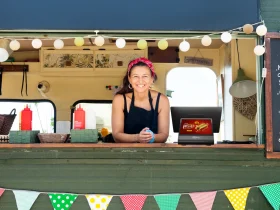In today’s ever-evolving restaurant landscape, adopting innovative strategies to enhance profitability and customer satisfaction is no longer optional; it’s imperative. Among these innovations, smart Point of Sale (POS) systems equipped with dynamic pricing capabilities stand out as a game-changer for restaurant owners. These systems not only streamline day-to-day operations but also empower businesses with the agility to adjust prices in real-time based on demand, seasonality, and other critical factors. This article dives deep into how restaurant owners can leverage dynamic pricing strategies with smart POS systems to stay competitive and thrive.
Understanding Dynamic Pricing Strategies for Restaurants
Dynamic pricing in restaurants is not a one-size-fits-all approach. It involves various strategies that can be deployed individually or in combination, depending on the business model and customer behavior. Here are some common dynamic pricing strategies integrated with smart POS systems:
- Time-based Pricing: Prices are adjusted based on the time of day or week, capitalizing on peak hours to maximize revenue. For instance, offering happy hour prices or early bird specials to increase footfall during off-peak times.
- Demand-based Pricing: Utilizes real-time data to adjust prices according to demand. High demand periods see a price increase, while slower periods might see a reduction to attract more customers.
- Event-driven Pricing: Prices are adjusted in response to local events or holidays, taking advantage of increased foot traffic or demand during specific periods.
- Competitor Pricing: Monitoring competitors’ prices and adjusting your pricing strategy accordingly to remain competitive in the market.
- Menu Item Performance: Adjusting prices based on the popularity or profitability of specific menu items, encouraging the sale of high-margin items.
Must Read: How to leverage the POS data to stay ahead of the competitors?
The Role of Smart POS Systems in Dynamic Pricing
Smart POS systems for restaurants are at the forefront of technological advancement, transforming traditional establishments into modern, data-driven businesses. These cloud-based POS systems enable restaurant owners to implement dynamic pricing strategies seamlessly, adjusting prices on-the-fly to match demand, thus optimizing revenue and enhancing customer engagement.
Why Dynamic Pricing Matters
Dynamic pricing is a strategy that allows businesses to set flexible prices for products or services based on current market demands. For restaurants, this could mean adjusting menu prices during peak hours, special events, or even in response to inventory levels. This approach not only maximizes revenue during high-demand periods but also attracts more customers during slower times with attractive pricing.
Implementing Dynamic Pricing with Smart POS Systems
The implementation of dynamic pricing in restaurants is made feasible and efficient through the use of sophisticated POS systems. These systems analyze various data points such as customer footfall, table turnover rates, and purchase history to suggest optimal pricing adjustments. Key features to look for in a POS systems include:
- Real-Time Data Analytics: To effectively adjust prices, POS systems must provide real-time insights into sales, customer behavior, and inventory levels.
- Customizable Pricing Rules: The system should allow for the creation of custom pricing rules that automatically adjust prices based on predefined criteria.
- Integration Capabilities: A seamless integration with online ordering platforms and inventory management systems is essential for a holistic approach to dynamic pricing.
- User-Friendly Interface: Both staff and management should find the system intuitive and easy to use to ensure smooth operation.
Benefits of Dynamic Pricing Strategies
- Enhanced Profit Margins: By capitalizing on peak demand periods with higher prices and enticing customers during off-peak times with discounts, restaurants can significantly improve their profit margins.
- Improved Customer Satisfaction: Dynamic pricing, when implemented thoughtfully, can lead to more satisfied customers by offering better deals during less busy times and ensuring that prices reflect the value received.
- Operational Efficiency: Smart POS systems automate much of the pricing strategy, allowing restaurant owners and managers to focus on other aspects of their business, like customer service and menu development.
- Data-Driven Decisions: The wealth of data provided by POS systems aids in making informed decisions about menu pricing, promotional strategies, and inventory management.
Must Read: How to Boost Revenue with Restaurant POS Systems
Best Practices for Restaurant Owners
- Transparency with Customers: Communicate clearly about how and why prices may vary, ensuring customers feel informed rather than taken advantage of.
- Monitor and Adjust: Regularly review the effectiveness of your dynamic pricing strategy and be prepared to adjust based on customer feedback and sales data.
- Staff Training: Ensure your team understands the pricing strategy and how to communicate it to customers, fostering a positive dining experience.
Conclusion
Dynamic pricing strategies, enabled by smart POS systems, offer restaurant owners a powerful tool to optimize revenue, improve customer satisfaction, and streamline operations. By choosing the right POS systems and implementing dynamic pricing thoughtfully, restaurants can adapt to market demands in real-time, setting themselves apart in a competitive industry. This innovative approach not only future-proofs your business but also enhances the dining experience for your customers, creating a win-win scenario in the challenging world of restaurant management.












Leave a Reply